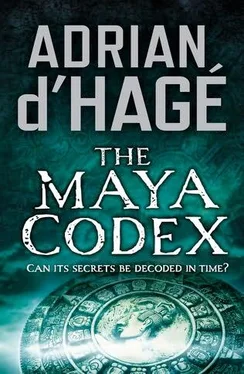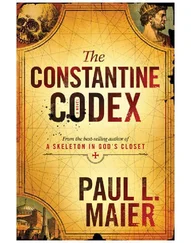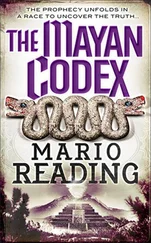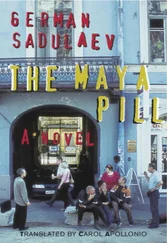Adrian D'Hage - The Maya codex
Здесь есть возможность читать онлайн «Adrian D'Hage - The Maya codex» весь текст электронной книги совершенно бесплатно (целиком полную версию без сокращений). В некоторых случаях можно слушать аудио, скачать через торрент в формате fb2 и присутствует краткое содержание. Жанр: Политический детектив, на английском языке. Описание произведения, (предисловие) а так же отзывы посетителей доступны на портале библиотеки ЛибКат.
- Название:The Maya codex
- Автор:
- Жанр:
- Год:неизвестен
- ISBN:нет данных
- Рейтинг книги:3 / 5. Голосов: 1
-
Избранное:Добавить в избранное
- Отзывы:
-
Ваша оценка:
- 60
- 1
- 2
- 3
- 4
- 5
The Maya codex: краткое содержание, описание и аннотация
Предлагаем к чтению аннотацию, описание, краткое содержание или предисловие (зависит от того, что написал сам автор книги «The Maya codex»). Если вы не нашли необходимую информацию о книге — напишите в комментариях, мы постараемся отыскать её.
The Maya codex — читать онлайн бесплатно полную книгу (весь текст) целиком
Ниже представлен текст книги, разбитый по страницам. Система сохранения места последней прочитанной страницы, позволяет с удобством читать онлайн бесплатно книгу «The Maya codex», без необходимости каждый раз заново искать на чём Вы остановились. Поставьте закладку, и сможете в любой момент перейти на страницу, на которой закончили чтение.
Интервал:
Закладка:
The Maya codex
Adrian D’Hage
PROLOGUE
Aleta Weizman stared at the falling snow from the window of her apartment, contemplating the future with a deep sense of foreboding. Winter had come early this year and a biting wind from across the Danube whipped the snow into flurries above the old cobblestones in the Stephansdom Quarter; but it was more than the chill winds worrying the brilliant Guatemalan archaeologist. Her studies of the ancient civilisation of the Maya had led her to believe they’d left behind a terrifying warning, one her grandfather had devoted much of his life trying to unearth. Now she had discovered another piece of the puzzle. In Vienna for an international conference on the Maya, Aleta had been browsing her grandfather’s books when she’d come across a signed copy of Erwin Schrodinger’s Science and the Human Temperament. Curious about her dear grandfather’s old friend, she’d flicked through the book and a page of yellowed notes and a small photograph of a pectoral cross had fallen out.
The notes, written in Levi Weizman’s meticulous handwriting, captivated her.
The Fibonacci sequence is prominent in the construction of all Mayan pyramids and temples. • Greek letter? – if you are to find the Maya Codex, look for? and the centre of the golden mean – Pacal.
Look for?, and the centre of the golden mean – Pacal. Who was Pacal? It was unlike her grandfather to write in code, so presumably he had not solved the puzzle but simply written it down word for word as he’d received it. And why were the notes hidden in a book? Had he suddenly been disturbed? What information was needed? Aleta turned over the photograph of the pectoral cross but there was no inscription on the back. Her father had mentioned the cross to her once, when they’d been fishing together on Lake Atitlan, telling her how the priceless family heirloom had been taken by the Nazis when he was a boy. She sighed, her dark-brown eyes troubled. The loss of her father still haunted her.
Curtis O’Connor adjusted his binoculars and focused on the woman standing near the window of the upper-floor apartment. Whatever else she might be, O’Connor thought, Dr Weizman was tall, young and very attractive. Her long black hair tumbled onto her shoulders, partly covering the fine features and tanned olive skin of her oval face. She seemed deep in thought as her dark eyes probed the night.
O’Connor remained hidden and kept his target under surveillance. At six feet tall, the CIA agent was fit and solidly built. Originally from Ireland, he had trained as a microbiologist. His face was tanned and his blue eyes were mischievous, but deceptive. His thick dark hair fell roughly into place. Very much his own man, O’Connor had one of the sharpest minds in the CIA, and his mission to assassinate Dr Weizman had troubled him from the outset. Why, he wondered, did his superiors on the seventh floor of headquarters back in Langley, Virginia, want this beautiful woman eliminated?
Aleta stared across Judengasse towards Saint Ruprecht’s, Vienna’s oldest church, failing to see the man in the shadows of the ivy-covered stone belltower. What must it have been like to live here under the brutality of the Nazis? Aleta knew that the narrow lanes of the old city once housed Vienna’s Jewish community; now they were home to designer-clothing shops and an eclectic collection of bars and discos, dubbed the ‘Bermuda Triangle’ by backpackers from around the world. Bar patrons had been known to disappear from Judengasse, or ‘Jew’s Lane’, in the small hours of the morning. Usually they reappeared a day or two later, a little the worse for wear but otherwise unharmed. In the more sinister Bermuda Triangle of the Atlantic, a small area to the north-east of the ancient Mayan lands of Guatemala and the Yucatan Peninsula, whole ships and aircraft sometimes disappeared without trace. Had Aleta known that her every move was being observed, she would have realised that, for her, Vienna’s Bermuda Triangle was every bit as dangerous as its Atlantic counterpart.
She gazed past the old square tower of Saint Ruprecht’s, past the trams running on Franz-Josefs-Kai, towards the Donaukanal, one of the many canals the resourceful Viennese had built in the late 1800s to control the persistent flooding of the Danube. Aleta maintained an open mind towards the ancient Maya’s warning of impending disaster, but she found it hard to dismiss the concrete scientific evidence that seemed to support it. Many of the events the Maya had declared as precursors to the coming disaster had already occurred. She reflected on the ancient stela, the stone monument inscribed with Mayan hieroglyphics she’d discovered in the Museo Nacional de Arqueologia y Etnologia in Guatemala City. The Museum of Archaeology had many stelae on permanent display, but it was the small stela in one of the storage rooms that had excited Aleta’s interest. It was the only stela she had ever seen inscribed with?. And now she’d found the same reference in her grandfather’s notes.
Aleta closed the heavy velvet drapes. She thought about exploring the streets of the elegant Austrian capital but decided against it, though not out of any concerns for her safety at night. The city where Mozart had spent his most successful and creative years was one of the safest in Europe. It was more that she wanted to be fresh for the opening day of the conference, which included several presentations by academics working to decipher Mayan hieroglyphics. The eminent Mayanist Monsignor Matthias Jennings would also be speaking tomorrow on ‘The Myth of the Maya’. She strongly disagreed with the pompous Jesuit priest’s views of the Maya as bloodthirsty, warmongering savages, but he was always controversial, which inevitably attracted the media and she relished the opportunity to publicly challenge his theories.
Aleta retrieved her glass of wine from the marble mantel above the fireplace, turned and felt a floorboard move under her weight. The natural curiosity of an archaeologist might normally have prompted her to investigate, but she was weary from the long flight from Guatemala City and retreated to her bedroom. The tin box that her grandfather had hidden there in 1938 remained undisturbed, just as it had when Hitler’s Brownshirts stormed the apartment over seventy years before.
O’Connor left the shadows of the Saint Ruprecht’s steeple, descended the short flight of icy steps to the Morzinplatz and jumped aboard an old number 1 tram at the nearby Schwedenplatz Strassenbahn-haltestelle. He settled onto one of the wooden seats and, as the tram rattled along the famous Ringstrasse, the roofs of the Neues Rathaus, the Parliament and the Opera House covered in snow, he reflected that he never tired of the dignified Austrian capital. He alighted at the Karntner Ring and walked the short distance to the Imperial Hotel, the former palace of Prince Philipp of Wurttemberg. Nikita Khrushchev, Indira Gandhi, Liz Taylor and Richard Burton had all stayed there, as had Bruce Springsteen, Mick Jagger and Hillary Clinton. O’Connor had heard that in the 1960s a young Rudolf Nureyev had asked for a room, but was refused – back then jeans were unacceptable in formal settings – until Lord Snowdon walked in and recognised the up-and-coming dancer. Snowdon had escorted him to the bar and Nureyev got his room.
O’Connor headed for the very same softly lit bar, and one of the hotel’s blonde pagegirls, dressed in an elegant olive-green suit trimmed in gold, flashed him a charming smile. O’Connor nodded, but wary of any entanglement he climbed onto a soft leather bar stool.
‘Champagne, thank you, Klaus.’ There were two people O’Connor always got to know in a hotel. One, the head concierge; the other, the head barman.
Читать дальшеИнтервал:
Закладка:
Похожие книги на «The Maya codex»
Представляем Вашему вниманию похожие книги на «The Maya codex» списком для выбора. Мы отобрали схожую по названию и смыслу литературу в надежде предоставить читателям больше вариантов отыскать новые, интересные, ещё непрочитанные произведения.
Обсуждение, отзывы о книге «The Maya codex» и просто собственные мнения читателей. Оставьте ваши комментарии, напишите, что Вы думаете о произведении, его смысле или главных героях. Укажите что конкретно понравилось, а что нет, и почему Вы так считаете.











